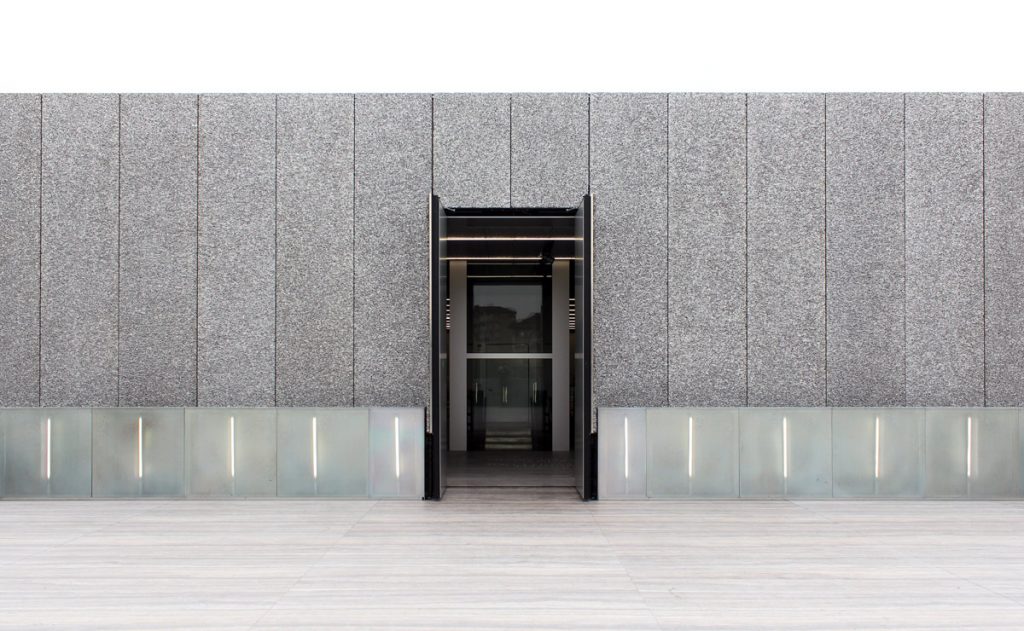Art or Sound at Fondazione Prada
Curated by Germano Celant, a provocative exhibition exploring the transcendental nature of instrumental expression

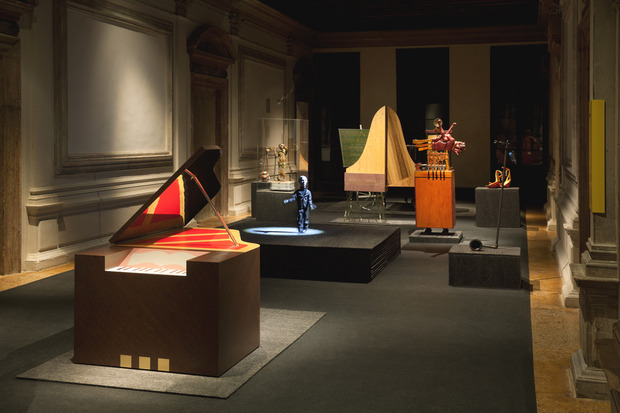
Ca’ Corner della Regina is a majestic Venetian palazzo overlooking Canal Grande, built between 1723 and 1728 by Domenico Rossi. At the end of 2010 Fondazione Prada began a restoration process on the historic building while also breathing new life into its rich cultural offerings.
The most recent incarnation of this program is “Art or Sound,” an exhibition curated by Germano Celant—the famed curator who coined the term “Arte Povera,” or “poor art.” The ambitious objective of this operation is to deepen the relationship between visual art and sound, the aesthetic of musical instruments, the role of the artist and the musician, and when and where art and music meet.

The “or” in the title does not intend to mark an opposition of factors, since the investigation is about thresholds—the thin and sometimes fuzzy limits that occur in artistic expressions. Instead, it stands as a binding agent for a series of questions about form and function. If objects can produce sounds, can sound be objectified? What is the concrete side of music? What is the best way to experience music: from a distance, or should each visitor become part of the performance? Which is the role of the body in the experience of sounds?
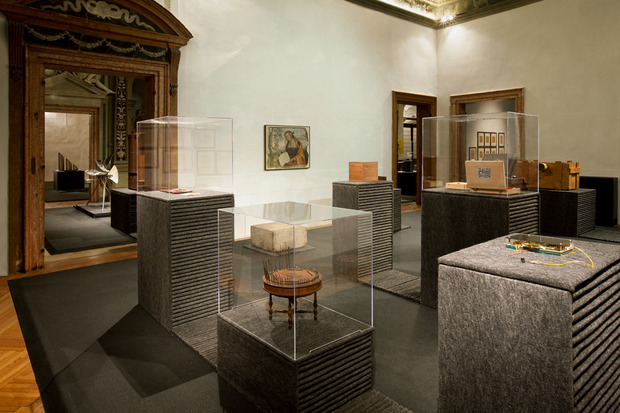
Design studio 2×4 is responsible for the excellent installation, whose bases and pedestals are made of sound-attenuating materials. The objects are displayed almost randomly, without any chronological or typological order. A free guide, very detailed and full of anecdotes, fills the gap, presenting the over 180 artifacts in chronological order—from Bartolomeo Veneto’s 1520 painting “Woman Playing a Lute” to 2013’s “Stack,” a sculptural soundscape by London-based Haroon Mirza. Hearing and sight are constantly excited by the videos, instruments, performances, sounds, music, making “Art or Sound” an exhibition for both the eyes and ears. Nevertheless, such an emotional labyrinth doesn’t make visitors feel disorientated, but rather like explorers on a mission.
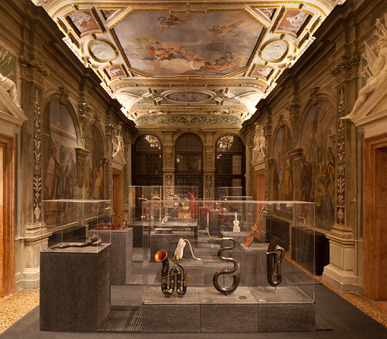
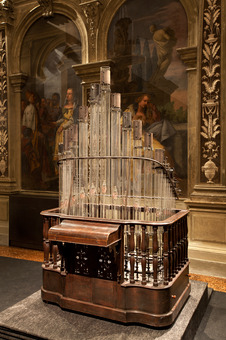
The search for new sounds through instruments has been around for a very long time and some crazy experiments lead to incredibly interesting works. Ever heard of a “pyrophone”? Physicist, chemist and musician Georges Frédéric Kastner built one in 1876. The instrument is a sort of organ, where each key releases gas and originates flames in glass tubes. The sounds it produced were similar to a human voice, a piano or a full orchestra. Unfortunately, this kind of instrument didn’t succeed in becoming popular, but some of the experiments turned into something we still know nowadays. That’s the case of the “Natural Trumpet” and other tools conceived by Belgian instrument maker Adolphe Sax, the man who also invented the saxophone.
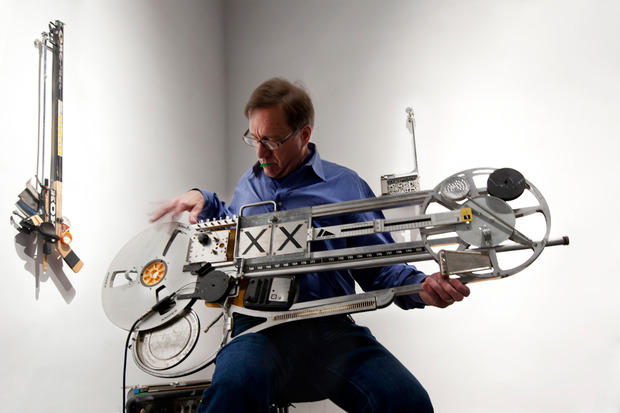
Some of the works on display look like experiments, or assemblages of random stuff. Such is the case with Ken Butler’s “Hybrid Instruments”: surprisingly, these have actual utility, which the author demonstrates during dedicated performances. The same happens with “Disarm” by Pedro Reyes; a group of string instruments made from the pieces of 6,700 dismantled weapons seized from drug cartels.

The performances are an essential part of the exhibition. We were lucky enough to witness the hypnotic repetition of classical dance and violin music executed in front of a painting, which consists of three essential parts to the “Senza Titolo (da inventare sul posto),” conceived in 1972 by Jannis Kounellis.

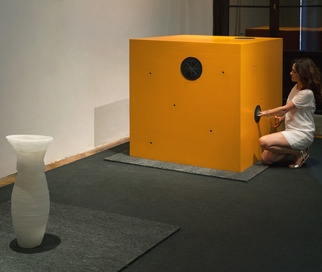
Very often the visitors are invited to engage with some of the art pieces, and become an active part of the exhibit. Doug Aitken’s “Marble Sonic Table” can be played and everyone has the chance to produce gentle and celestial sounds.
Japanese artist Ay-O’s 1979 work “Ay-O’s and Joe’s Soundbox” is a big orange box where tiny buttons reproduce any kind of mechanical and electric sounds. Since different people can play it at the same time, the experience is fun and a source of constant surprises.

Another brilliant example is Laurie Anderson’s “Handphone Table,” which is based on the principle by which bones conduct sound. Each participant is asked to put its elbows on two nodes and hands on ears. In this way, two different tunes (one for each listener) are transmitted from a hidden playback system, through the arms, directly to the brain.
“Art or Sound” is on view at Fondazione Prada through 3 November 2014.
Images courtesy of Fondazione Prada


